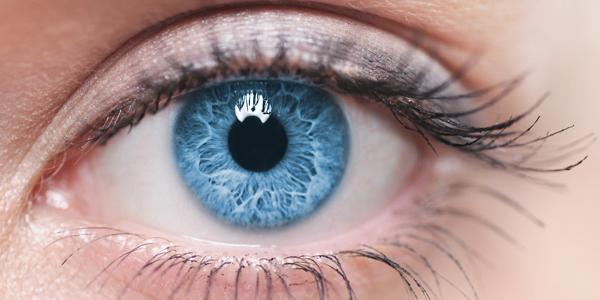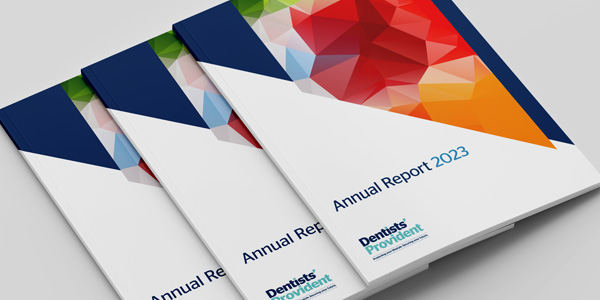
As dental professionals, you and your team have been used to the challenge of communicating whilst wearing masks for a lot longer than most; looking into your patients' eyes for signs of discomfort or calmness, often receiving muffled noises with your gloved fingers in their mouths in return. Recent months have however taken this to another level, with masks, visors and full PPE having become the norm. And in everyday life we are all having to learn to communicate more using our eyes whilst politely asking people to repeat what we can only vaguely hear.
Facial expressions
Facial expressions of course play a major role in communication; relaying feeling, emotions and unspoken thoughts between individuals. To read others faces allows us to process the situation and know how to respond to it.
Scientists have a Facial Action Coding System that taxonomizes the movement of human facial muscles and actions. A nose wrinkle, for example, involves the middle of our faces and smiling and grimacing obviously involves our lower muscles. While wearing a mask, these can’t however always be seen, let alone used to fully judge or sometimes even understand the interaction as the middle and lower face are known to be very influential in terms of emotional recognition. A face mask can therefore hinder interpersonal connection and the ability to understand people's expressions during conversations.
Human and societal differences
We are used to reading faces, however making more use of prolonged eye contact is not yet natural behaviour. Most animals look at each other only to signal their interest or that they’re a threat. In humans, social interaction usually only involves brief periods of mutual eye contact.
A British study found that people look at each other’s eyes only 30-60% of the time when talking, let alone staring into them. Surely this will change if we all continue wearing masks, as there is little else on show to offer those all-important non-verbal clues to indicate how we are feeling. After all, over 50% of our communication is non-verbal, and our facial expressions are a big part of that, especially now that so many of our interactions are made through a computer or phone screen. And there are an increasing number of stories being shared in the media around the world of the adaptions of using eye contact, not just in professional or social situations, but with strangers in the socially distanced queues we find ourselves in now.
Culturally there are differences too. Obviously there are many Middle Eastern countries where women wear face coverings such as a burka for religious and/or personal reasons, so you can only see their eyes, and there have been a number of studies comparing the reaction of others to eye contact in the east and west. In some Asian and Caribbean cultures for example, meeting someone’s eyes can be perceived as rude, making them feel that the person is angry or unapproachable. In a study of Finnish and Japanese individuals, the Finnish had a similar bias toward judging averted gazes when judging other Fins while, in Japan, the bias of Japanese viewers did not differ between faces from their own and other cultural backgrounds. A theory is that because westerners experience more eye contact in their daily lives than those in the east, they are more perceptive to the subtle ranges of eye contact, especially with people from their own country.
Dental professionals and communication
As you will be well aware, principle two of the GDC’s standards for dental professionals; ‘Communicate effectively with patients’, lists the expectations patients should have in order to ‘receive full, clear and accurate information that they can understand, before, during and after treatment, so that they can make informed decisions in partnership with the people providing their care’. These expectations, in order to gain informed consent, can be even harder to obtain if you are unable to judge how clearly a patient, who is perhaps nervous, has understood all of their care or treatment options. This could leave you vulnerable to complaints, or to patients just not coming back.
Professional indemnifiers are very aware of these situations, and online and in person are frequently giving advice on good communication techniques and recommend that we reflect on our verbal and non-verbal actions and, if necessary, take steps to improve them.
Dental publications also regularly publish articles, and papers have been written for many years reminding dental professionals that non-verbal communication is a powerful tool to positively connect with your patients. This is currently something that is important to focus on more than ever.
This information often focuses on the fact that in a dental professional/patient setting, positive facial expressions play a crucial role in managing a patient's anxiety, as is being able to express empathy with your face. Yet wearing a mask has a significant effect on your ability to do so and creates a barrier at a time when the opposite is required. This means that showing empathy and kindness with your eyes is of paramount importance in relaxing your patient, however it can create extra challenges with patients with specialised needs.
In November last year, an article in Dentistry reminded the reader that it was important to maintain appropriate eye contact without staring, balancing respect for the patient while showing you are actively engaged and listening to them. For example, furrowing your eyebrows may suggest you have found an area of concern or that something is not going as planned, as the patient often has little to look at except your face. Transparent face masks and shields could help to show you and your team’s facial expressions and emotions far better.
New theories
Scientists at the University of Zurich are investigating a theory about our eyes, that they are more than just the windows to our soul, but rather that our pupils can tell us about our brain’s decision-making ability. In doing so, they used an eye-tracker to monitor pupil size, as the theory is that when we do something that requires physical effort our pupils dilate, and activity is at the same time heightened in our prefrontal cortex. There is a view that our pupils therefore play an important role in our decision making.
Your eyes aren’t only just an important personal tool to look after, to be able to do your job, with or without loupes, but are also an important tool to communicate with your patients and understand how they feel in order to build a long-lasting, healthy relationship with them.
References available on request.
This article is intended for general information only, it is not designed to provide financial, health or other advice, nor is it intended to make any recommendations regarding the suitability of any plans for any particular individual. Nothing in this article constitutes an invitation, inducement or offer to subscribe for membership or additional benefits of Dentists’ Provident.
No responsibility or liability is assumed by Dentists’ Provident or any copyright owner for any injury or damage to persons or property as a consequence of the reading, use or interpretation of its published content. Whilst every effort is made to ensure accuracy, Dentists’ Provident, the authors, Editors and copyright owners cannot be held responsible for published errors.
Dentists’ Provident exercises editorial control only over material published and/or produced by it. No responsibility or liability is assumed by Dentists’ Provident for any articles produced or reproduced in third party publications and/or websites.
The views or opinions expressed do not necessarily reflect views of Dentists’ Provident or copyright owners. Inclusion of any advertising material does not constitute a guarantee or endorsement of any products or services or the claims made by any manufacturer.
If you have any questions, please contact our member services consultants by emailing press@dentistsprovident.co.uk or calling 020 7400 5710.
If you have any questions, please contact our member services consultants by emailing
memberservices@dentistsprovident.co.uk or calling 020 7400 5710.

Our 2024 Annual General Meeting will be held at 91-94 Saffron Hill, London, EC1N 8QP on Friday 24th Ma…
Read more
The 2023 annual report from Dentists’ Provident, a leading income protection provider for dental profe…
Read more
Our next exhibition is the British Dental Conference & Dentistry Show in May, where we look forward to meeting anyone interested in becoming a member or members wanting to discuss their plans.